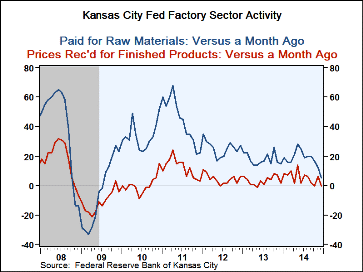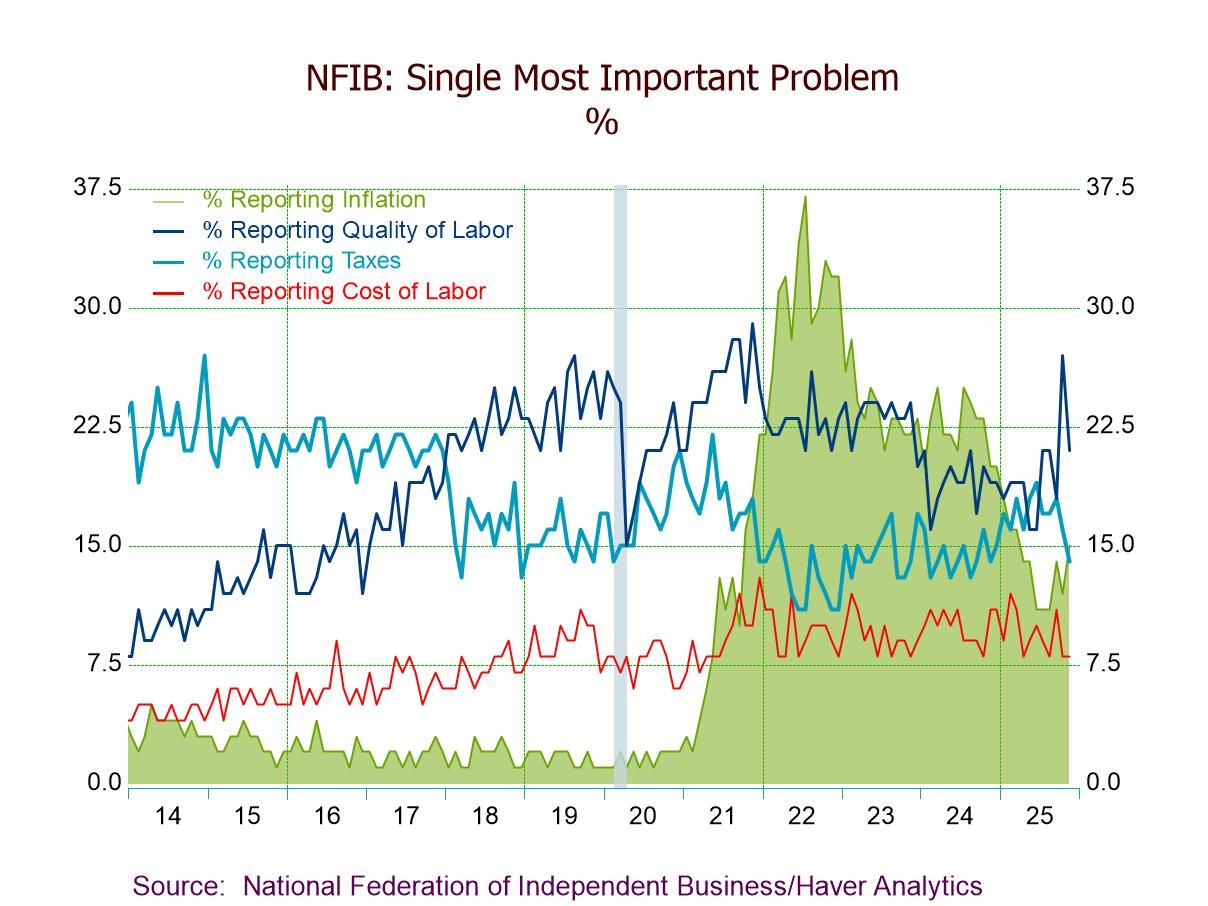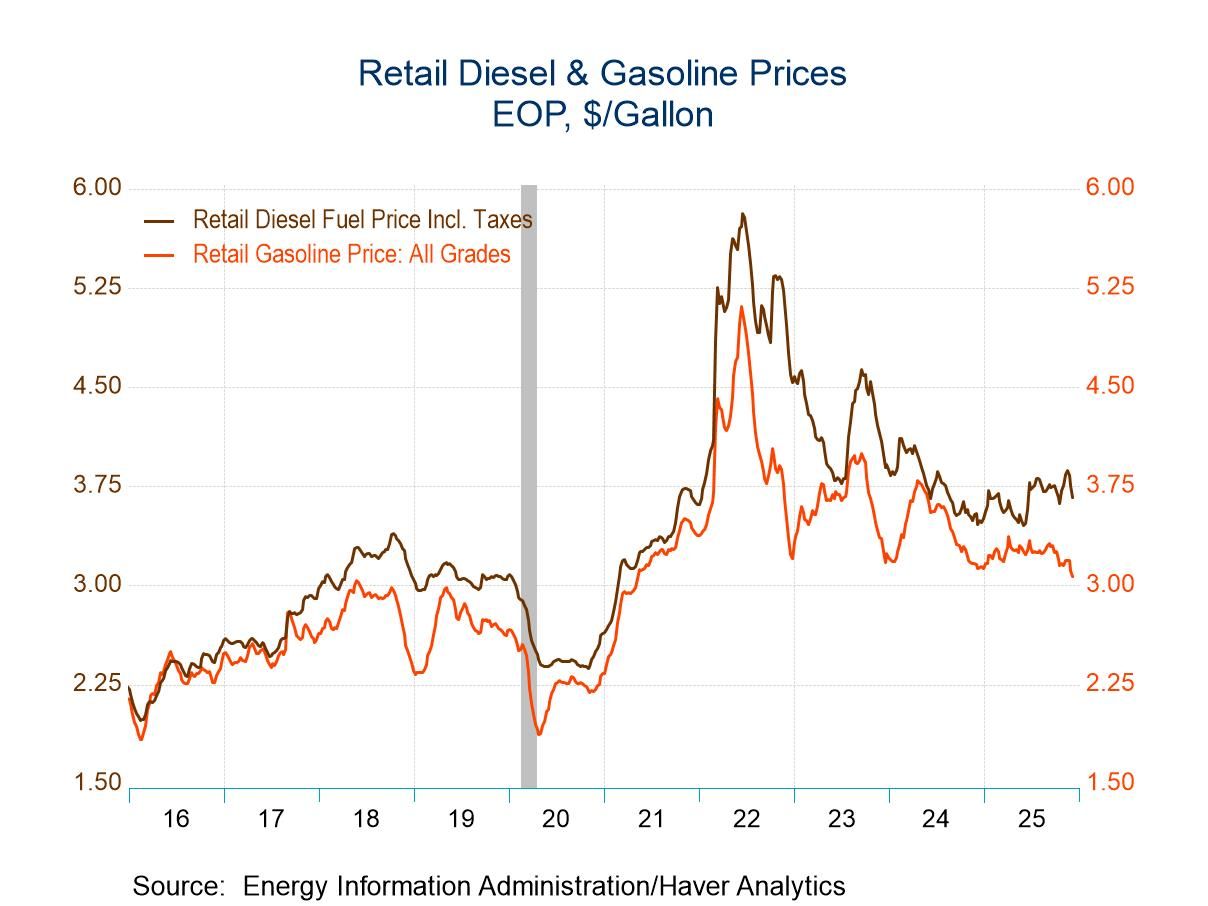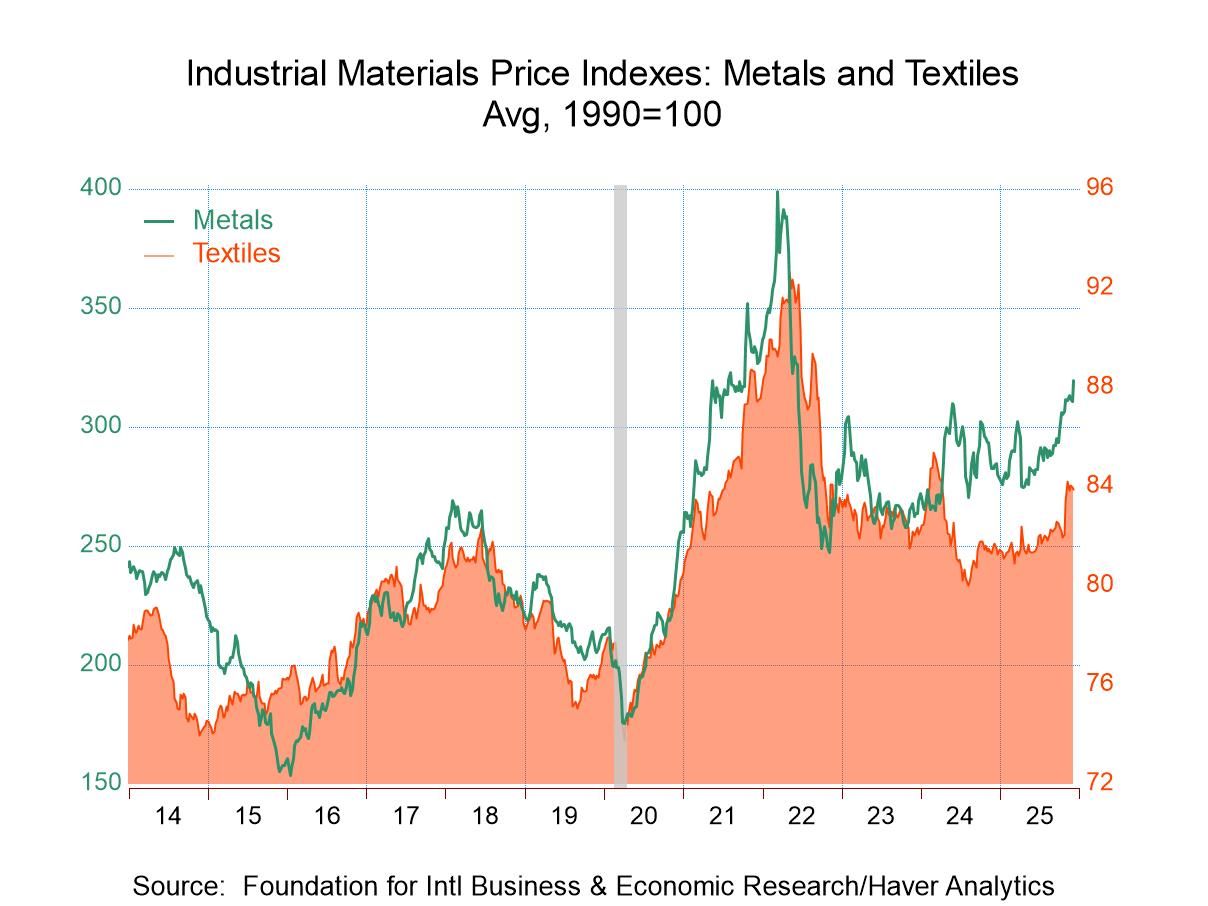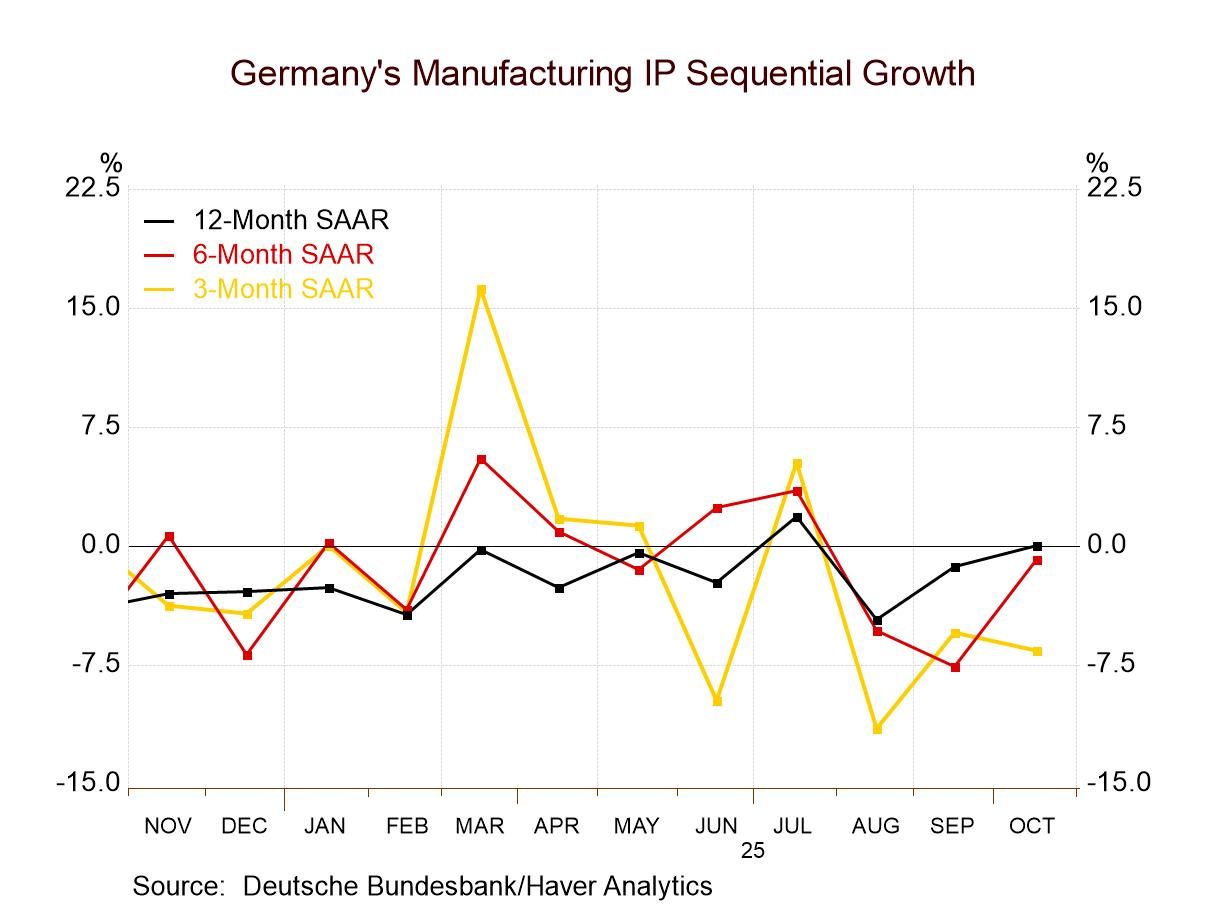 Global| Dec 19 2014
Global| Dec 19 2014Kansas City Fed Factory Sector Activity Improves; Raw Materials Pricing Power Evaporates
by:Tom Moeller
|in:Economy in Brief
Summary
The Federal Reserve Bank of Kansas City reported that its Composite index of 10th District factory sector activity rose to 8 this month, the highest level in three months. It remained, however, near the middle of the recent range. The [...]
The Federal Reserve Bank of Kansas City reported that its Composite index of 10th District factory sector activity rose to 8 this month, the highest level in three months. It remained, however, near the middle of the recent range. The new orders component rose sharply to its highest level since July. The employment moved sideways at the highest level since May. The composite index is an average of the production, new orders, employment, supplier delivery time and raw materials inventory indexes. The prices paid index fell m/m to 0, the lowest level since May of last year. The index of prices paid for raw materials declined sharply to 5, the lowest point of the economic expansion.
Expectations held steady at the highest level since January, suggesting future improvement in business conditions. Expected prices paid for raw materials, however, slumped to the lowest point since the summer of 2009. Expected finished product prices continued in its recent sideways trend. New orders also continued in its sideways trend since the spring while the shipments figure matched its highest point since April. Employment rose to its highest level since 2006 but the employee workweek reversed most of its November rise. Capital expenditures recovered to the highest level since July.
The diffusion indexes are calculated as the percentage of total respondents reporting increases minus the percentage reporting declines. The survey included 94 responses from plants in Colorado, Kansas, Nebraska, Oklahoma, Wyoming northern New Mexico. Data for the Kansas City Fed Survey can be found in Haver's SURVEYS database.
Modeling Labor Markets in Macroeconomics: Search and Matching from the Federal Reserve Bank of Richmond is available here.
| Kansas City Federal Reserve Manufacturing Survey (SA) | Dec | Nov | Oct | Dec '13 | 2014 | 2013 | 2012 |
|---|---|---|---|---|---|---|---|
| Conditions Versus One Month Ago (% Balance) | 8 | 7 | 4 | -3 | 7 | 0 | 4 |
| New Orders Volume | 12 | 1 | 2 | 1 | 7 | 1 | 0 |
| Number of Employees | 9 | 9 | 6 | 0 | 5 | -2 | 5 |
| Prices Received for Finished Product | 0 | 6 | 0 | 2 | 5 | 3 | 5 |
| Expected Conditions in Six Months | 22 | 22 | 17 | 15 | 17 | 10 | 12 |
| New Orders Volume | 26 | 24 | 26 | 24 | 26 | 18 | 21 |
| Number of Employees | 32 | 31 | 16 | 15 | 18 | 9 | 13 |
| Prices Received for Finished Product | 25 | 23 | 20 | 18 | 26 | 24 | 24 |
Tom Moeller
AuthorMore in Author Profile »Prior to joining Haver Analytics in 2000, Mr. Moeller worked as the Economist at Chancellor Capital Management from 1985 to 1999. There, he developed comprehensive economic forecasts and interpreted economic data for equity and fixed income portfolio managers. Also at Chancellor, Mr. Moeller worked as an equity analyst and was responsible for researching and rating companies in the economically sensitive automobile and housing industries for investment in Chancellor’s equity portfolio. Prior to joining Chancellor, Mr. Moeller was an Economist at Citibank from 1979 to 1984. He also analyzed pricing behavior in the metals industry for the Council on Wage and Price Stability in Washington, D.C. In 1999, Mr. Moeller received the award for most accurate forecast from the Forecasters' Club of New York. From 1990 to 1992 he was President of the New York Association for Business Economists. Mr. Moeller earned an M.B.A. in Finance from Fordham University, where he graduated in 1987. He holds a Bachelor of Arts in Economics from George Washington University.



